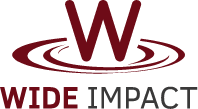By Dr. Salam Slim Saad
Training is an essential part of any company that wants to be successful. It’s how new employees learn the ropes and experienced employees become proficient at their jobs. But what makes a training program successful? How can companies get the most out of their training budgets?
At Wide Impact, we have helped hundreds of organizations improve the effectiveness and efficiency of their training programs. Our role is to assist our clients in making informed decisions about the curriculum structure and content, then ensure that each part of the program will achieve its project objectives. The challenge for us and our clients stems from creating a program that will provide a meaningful outcome. Let me share with you some of our success criteria for designing Curriculum here at wide Impact, we’ll look at best practices for different parts of the training process, and how each piece impacts overall training success.
What is curriculum development?
The notion to develop an educational program for learners has been around since the time of the Ancient Greeks. Platoand Aristotle both talked about how important it is to have an organized framework for education.
Curriculum development is the process of designing and creating a structured plan for teaching and learning. It involves identifying what should be taught, how it should be taught, and in what order. Curriculum development also includes selecting appropriate materials, resources, and assessment methods to support the learning objectives.
The primary goal of curriculum development is to create effective educational programs that meet the needs of learners. This can include anything from traditional classroom instruction to e-learning modules or blended approaches.
Curriculum development plays a vital role in shaping educational programs across industries. By applying best practices during this process and remaining flexible enough to adapt as needed based on feedback from learners or stakeholders alike – we can create impactful training experiences that drive results!
The Need For Curriculum Development
The need for curriculum development in training programs is paramount. It ensures that the program remains relevant and effective, meeting the needs of both learners and industry standards.
With advancements in technology, changes in social norms, and new discoveries in various fields, it is essential to update curriculum content regularly. This keeps learners informed about new concepts they need to know to stay competitive in their respective fields.
Moreover, a well-developed curriculum provides clarity on what should be taught when it should be taught and how it can be assessed effectively. Thus, learning objectives are clear from the outset leading to better learner performance outcomes.
Curriculum development also promotes consistency across different trainers or teachers who may have different teaching styles. A standardized approach ensures all learners receive equal opportunities for success based on established criteria.
A well-crafted curriculum can help institutions attract more learners as prospective learners seek programs that offer modern-day skills necessary for employability while delivering exceptional value for money invested.
Curriculum Development Best Practices
The curriculum development process is a time-consuming, resource-intensive task that is driven by the professional organization. It requires skills across several disciplines (e.g., instructional design, assessment design, and training). The two main challenges in curriculum development are meeting stakeholders expectations and ensuring that selected materials and technologies will effectively address the needs of all learners.When developing a curriculum, it’s important to keep in mind some best practices that can help ensure the program is effective and engaging for learners. Here are some tips to consider:
1- Objectives And Goals: When developing a training program, it’s crucial to have well-defined goals and objectives. These serve as the foundation for the entire curriculum and help ensure that learners are able to achieve desired outcomes. Here are some best practices for defining goals and objectives:
Firstly, start by identifying the specific skills or knowledge areas that need improvement. This could involve conducting a needs assessment or consulting with subject matter experts.
Next, develop clear, measurable learning objectives that align with these identified areas of improvement. Objectives should be specific, achievable, relevant and time-bound.
It is also important to consider the overall purpose of the training program – whether it’s to improve job performance or prepare employees for career advancement.
Regularly revisit these goals and objectives throughout the development process to ensure they remain aligned with business needs and learner requirements.
2- Avoid a One-Size-Fits-All Curriculum: Creating a one-size-fits-all curriculum can be tempting, especially when dealing with large groups of learners. However, this approach may not work for everyone. Every learner is unique and has their own learning style and pace.
Therefore, it’s essential to tailor your curriculum to the individual needs of each learner. One way to do this is by conducting a survey or assessment prior to developing the curriculum. This will help you understand your learner’s preferred learning styles, interests, and goals.
Additionally, you can offer different paths within the same course based on each learner’s level of understanding. For example, providing additional resources for those who need more guidance or challenges for those who are ahead could maximize engagement and improve outcomes.
3- Consider Your Audience: When developing a training program, it’s essential to consider the needs of your audience. After all, the goal is to provide valuable knowledge and skills that they can apply in their work.
To start, identify who will be participating in the training program and what their specific goals are. This could include new hires looking for an introduction to company culture or seasoned employees seeking advanced training opportunities.
Once you understand your target audience, tailor the content accordingly. Use language that resonates with them and incorporates examples relevant to their job function.
Another key consideration is learning styles. Some people prefer visual aids such as videos or infographics while others learn better through hands-on activities or case studies. Be sure to incorporate a variety of teaching methods into your curriculum so everyone has an opportunity to engage with the material.
4- Differentiate Instruction: Incorporating a variety of teaching methods is crucial in curriculum development for training programs. This ensures that the content is delivered effectively to all types of learners, as people have different learning styles and preferences.
One method is incorporating interactive activities such as group discussions or role-playing exercises. These can help engage learners and encourage participation, promoting better retention and understanding of the material.
Another effective method is using multimedia tools like videos, audio recordings or infographics. These provide visual aids to supplement text-based materials and reach out to visual or auditory learners.
Hands-on activities like simulations or practical demonstrations are also great ways to reinforce learning outcomes by providing practical applications for theoretical concepts.
Using case studies or real-life scenarios helps connect theory with practice while fostering critical thinking among participants.
By integrating various teaching methods within a training program’s curriculum development plan , trainers can ensure that they cater to diverse individual needs while keeping their courses interactive and engaging.
5- Feedback Mechanisms: Incorporating feedback mechanisms such as quizzes or assessments is a crucial element in any effective curriculum development process. These tools provide valuable insights into the learning progress of participants and help trainers determine whether their training objectives are being met.
Quizzes and assessments can take many different forms, from multiple choice questionnaires to practical exercises that mimic real-world scenarios. The key is to choose the right type of assessment for your audience, ensuring that it aligns with the goals and objectives of your training program.
When designing your quiz or assessment, be sure to consider factors such as timing, scoring criteria, and feedback methods. For example, you may want to use a timed quiz if speed is an important factor in achieving your training goals.
It’s also important to keep in mind that assessments shouldn’t just be used at the end of a training program. Incorporating regular quizzes or mini-assessments throughout the course can help reinforce learning concepts and identify areas where additional instruction may be required.
Ultimately, incorporating feedback mechanisms such as quizzes or assessments should be seen as an ongoing process rather than a one-time event. By continually evaluating participant progress throughout your training program, you’ll be able to make adjustments along the way and ensure that everyone reaches their full potential.
6- Keep Up To Date With The Latest Trends, Technologies And Tools: Staying up-to-date with the latest trends and technologies is crucial for curriculum development in training programs. As industries evolve, so do their needs, and it’s essential to keep pace with these changes. This means keeping an eye on emerging technologies that can enhance your program delivery, such as virtual reality or gamification.
Moreover, attending conferences or workshops related to your industry or field of expertise can help you stay current and informed about the latest developments in teaching methods. Additionally, subscribing to relevant publications or blogs can provide valuable insights into best practices from experts working in the same industry.
7- Involve Learners in Curriculum Development: One of the best practices when it comes to curriculum development is involving learners in co-creating the curriculum. This approach ensures that learners are not just passive receivers of information but active participants in their own learning process.
By involving learners, you can gain valuable insights into what they find interesting and relevant. You can also tap into their creativity and problem-solving skills which will result in a more engaging and effective learning experience.
When learners are involved in co-creating the curriculum, they take ownership of their learning journey, making them more motivated to learn. It also fosters a sense of collaboration among learners as well as between teachers and learners.
This approach requires flexibility on behalf of educators who must be willing to adapt their teaching methods based on feedback from learners. However, this willingness to change will ultimately result in a better educational experience for all involved.
8- Develop Microlearning Modules: Developing tutorials that support microlearning is crucial in today’s fast-paced environment as it provides learners with bite-sized chunks of information. This approach allows for better retention and understanding, especially when complex topics are involved.
To develop effective microlearning tutorials, start by breaking down larger concepts into small, digestible modules. Each module should contain a specific learning objective that learners can easily comprehend and apply to real-life situations. This ensures that the learner doesn’t get lost in extensive content but progresses steadily towards mastering each concept.
Another best practice would be to use multimedia elements like videos, podcasts or infographics to deliver these modules since they increase engagement and help learners understand abstract ideas better. You could also design interactive exercises such as quizzes or simulations to reinforce knowledge acquisition while still keeping the tutorial brief.
Ensure that your micro tutorials follow a logical sequence where earlier ones build upon previous ones’ knowledge, leading up to more complex topics at later stages. This way ensures consistency in learning outcomes across all your courses.
Written By



